Viticulture
The municipality of Ladice forms part of the Nitra wine-growing region, area of Podtribečie; earlier Velčice, Jelenec, Kostoľany pod Tribečom, Mankovce and Topoľčianky belonged to this area as well. Viticulture is attested in Ladice as far back as the 16th century, its heyday was to occur two hundred years later. Vineyards developed in the Nitra as well as Tekov part of the municipality. Contemporary texts describe the local vineyards delivering only a moderate yield.
From station No. 22 the green marking (5129) descends on a field road through an orchard to the vineyards and the former pastures. Station No. 23 is situated on their edge, about 500 m from station 22. Station No. 23 lies on the border of Nitra part of the Ladice vineyards. Time: 9 min., in the opposite direction 13 min., length: 0.5 km, easy, in the opposite direction slightly challenging.
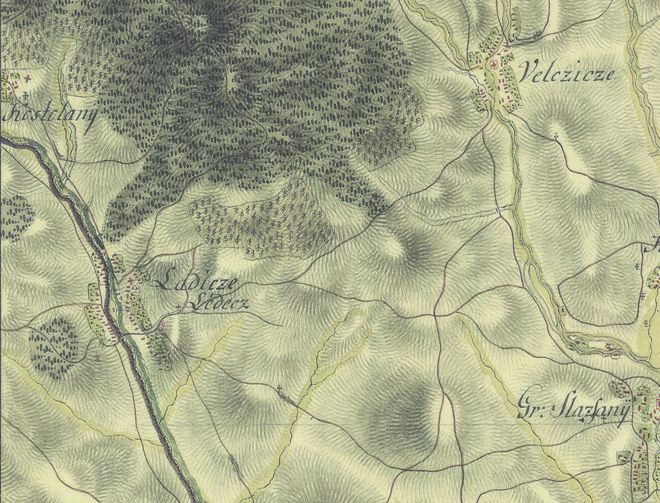
Brief history of viticulture
In 1746 they were assigned only the third soil rating class. In the course of the 19th century the vineyards gradually started to shrink. The grape phylloxera, which was imported from America in the last third of the 19th century, caused major damage to the vineyards. About 80 % of the vineyards were destroyed in Slovakia, and Ladice was not spared either. 10,000 new roots of vine had to be planted to renew the vineyards. After World War I the vineyards of Ladice covered 9 morgen (5.1 ha). The largest vineyard was 3 morgen (1.6 ha) in size. It was situated in the Tekov part and owned by Karol Konlegner a big landowner from Neverice. After 1945 this vineyard as well as others were confiscated and after that operated by a winegrowers’ cooperative at Ladice, parts of it later sold to interested people. The foundation of a cooperative vineyard at the beginning of the 1970s meant a new bloom of viticulture at Ladice. The vineyard in the cadastral section of Čereš covers about 40 ha and is situated south of the historical vineyards in the Nitra part of Ladice.

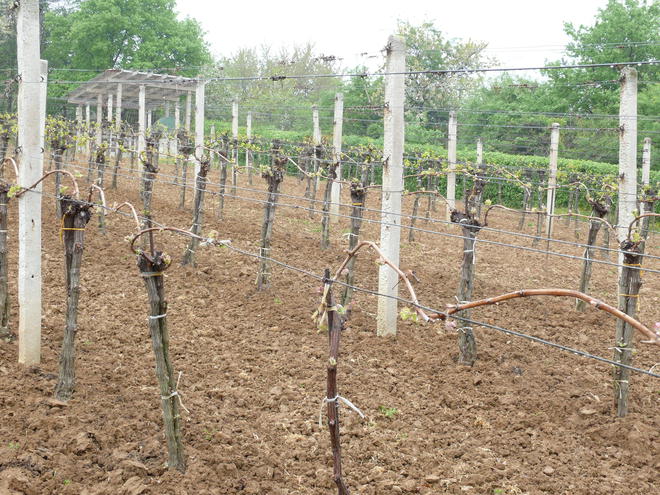
Present
Currently small winegrowers and the largest winegrower in the wine-growing region of Zlaté Moravce, the company Vinárske závody Topoľčianky, s.r.o. in the former cooperative vineyard Čereš, are growing wine on the territory of Ladice. The preferred cultivars of the winegrowers of Ladice are Pinot blanc, Welschriesling, Riesling, Blaufränkisch, Cabernet Sauvignon, and lastly also Alibernet. The new varieties of Neronet, Dunaj have been planted now and the winegrowers are turning as well to older cultivars like Pinot gris and Pinot noir. The quality of the small winegrowers’ wine is attested by awards as the golden and silver medals from regional fairs. The company Vinárske závody Topoľčianky, s.r.o. is growing Müller-Thurgau, Cabernet Sauvignon, Blauer Portugieser, Blaufränkisch, and Alibernet. Especially the variety Alibernet achieves a high quality, and has won a number of awards at Slovak and international fairs.
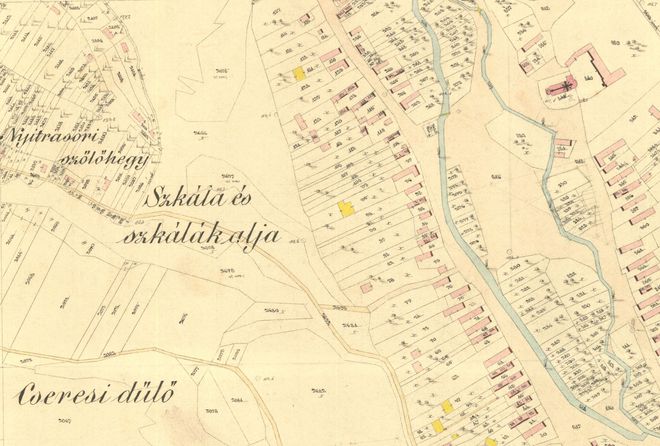
Urban Development
The historical Nitra part of the Ladice vineyards (Nyitrasori szöllöhegy) is situated at the former road from the centre to Gýmeš Castle (green marking 5129), from which a sideway turns to the south bordering the vineyards. The overall extent of the area is known from a map of land consolidation in 1868, a cadastral map from 1892 shows a parcellation, roads, and extant buildings. The variety of individual properties shows that the vineyards were originally not measured according to a centrally organised and managed project. This also witnessed by irregularities in the inner road net, which is still dividing the vineyards into a number of parts. They developed gradually and vividly on the frontiers of the properties. Today the buildings on the vineyards consist of a number of architectural layers. The current density, which is largest mainly on the southern and north-eastern border of the winegrowing area and least nearby the inner roads, vaguely corresponds to the situation at the end of the 19th century.
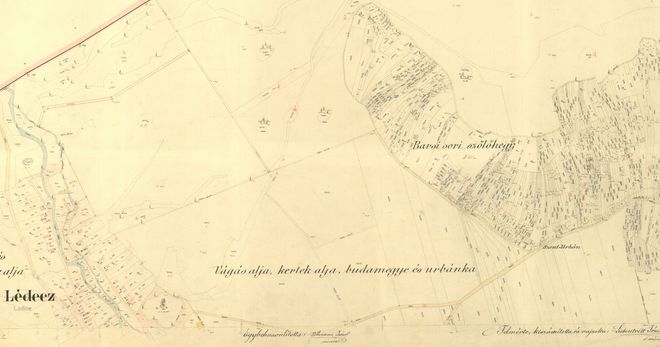
A similar development is attested in the Tekov part of the Ladice vineyards (Barsi szöllöhegy). It was accessed by two roads, one directly from the centre of the municipality, from the parish, and the second from the Hlboká cesta in the southern part of the Tekov line, which was part of the old road from Ladice to Velčice and Sľažany. The overwhelming number of the hajlochs was erected in the southern part of the vineyard; they are arranged fan-like, transversely to the southern slope of Malý Lysec Mountain, near the main road of the winegrowing area, and today they lead along its southern border.
Architecture
Winegrower’s houses called hajloch are the typical architecture of the vineyards. The hajloch was a storehouse for the working tools and equipment, to process the grapes and store wine. The oldest hajlochs have log walls and straw roofs. Two types of hajlochs were common: One had two rooms, called povalová pivnica (attic cellar) or bádáš, on the same level, one room for the equipment and wine and the second served as simple accommodation for the winegrower during the working season.
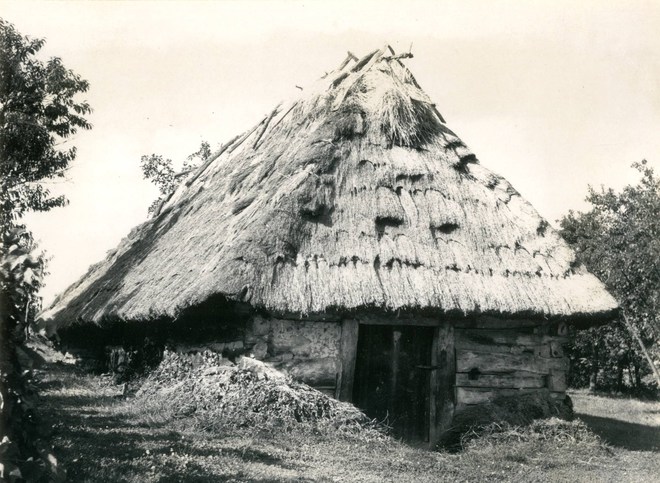
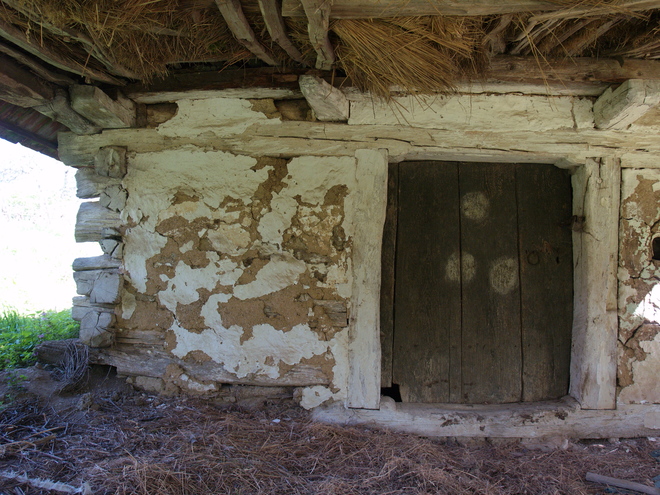
The second type of hajloch had an underground cellar. The beginnings of the hajlochs seems to be connected with the spread of viticulture in the second half of the 18th century; they are however historically attested only since the first half of the 19th century.
Hajlochs with log construction have formed an important part of the winegrowers’ architecture until the 1960s. The extant buildings are lacking the original straw roofs and most of them are falling into ruin.
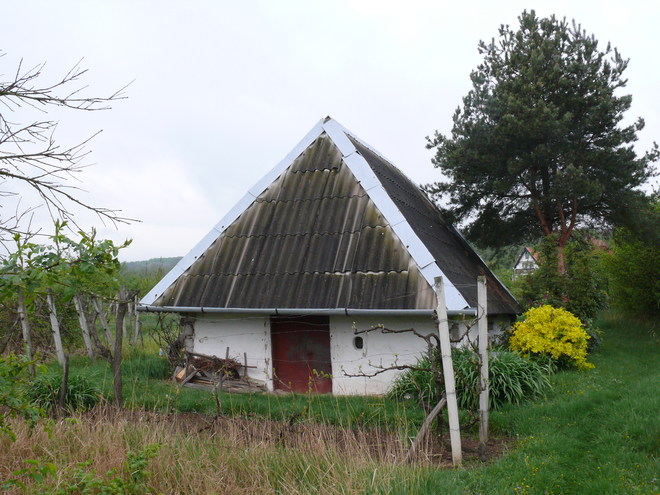
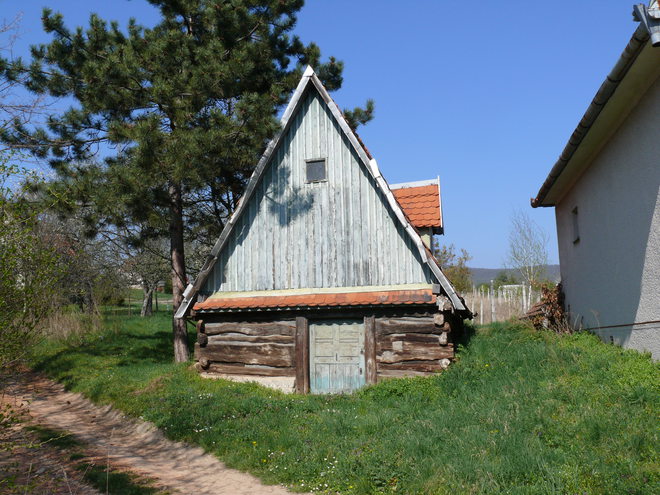
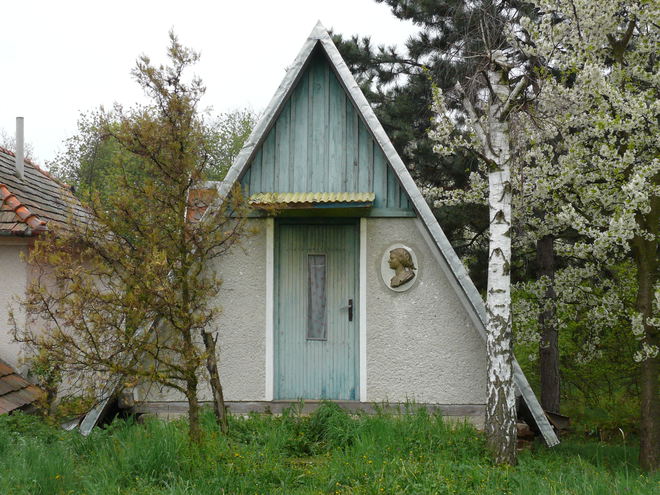
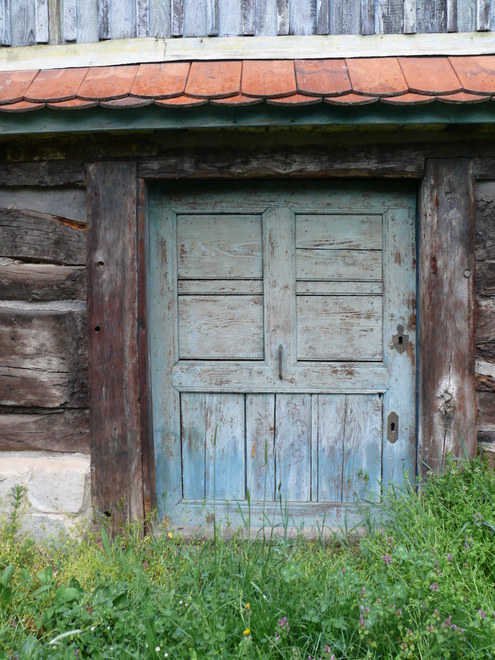
Bricked winegrower’s houses, not only for the storage of wine and equipment but also for getting-together and degustation, have first emerged in between the two world wars. Since the 1950s they are renovated as recreational cabins with a cellar for processing and storage of wine.
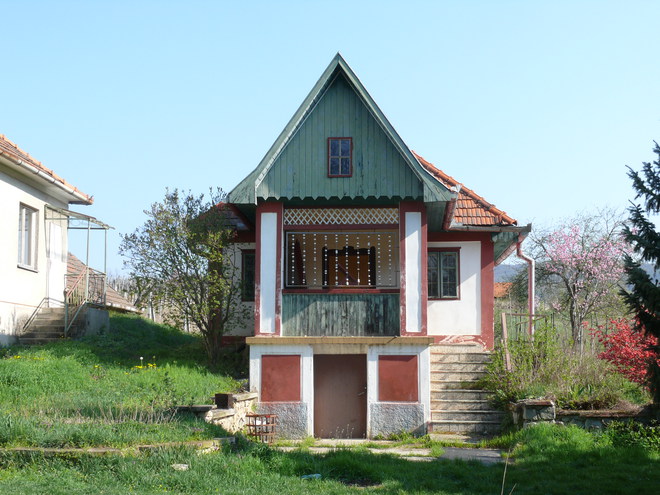
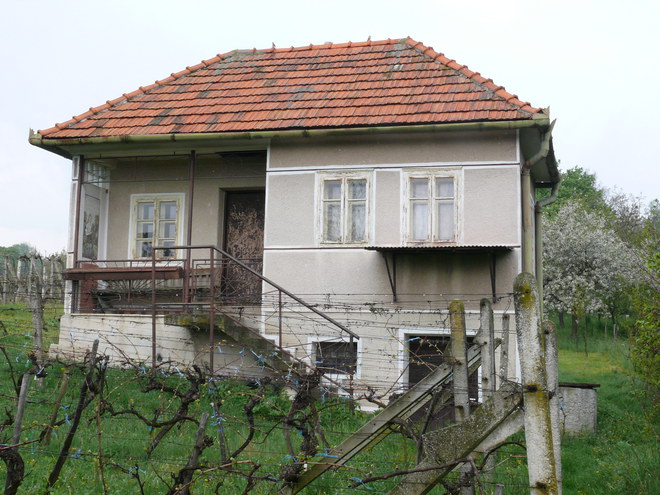
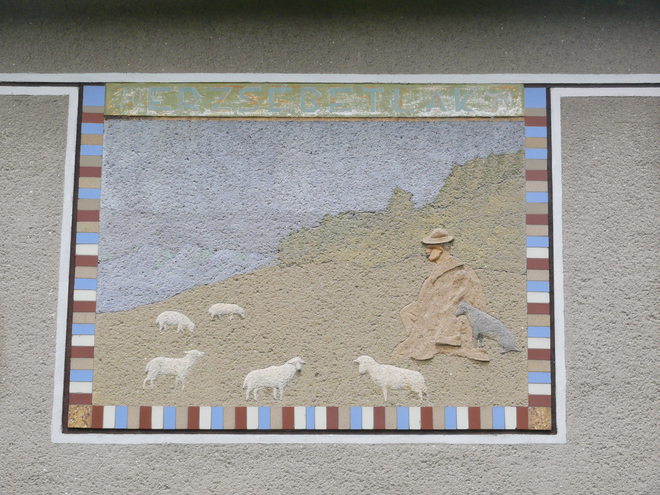
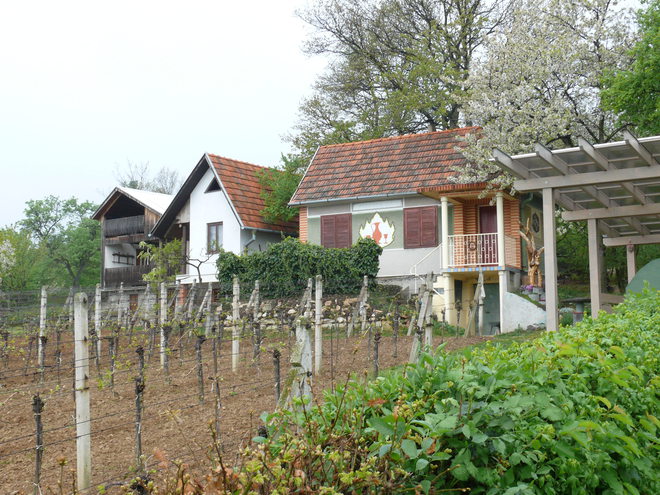
Small architecture
Statues of St Urban protected the Tekov as well as the Nitra part of the Ladice vineyards. The statue of St Urban on the Tekov part has been erected in 1834. The protector of the Nitra part together with a wooden crucifixion is situated on the south-eastern corner of the vineyards. It is a work by the Ladice artist Štefan Baráth. A chapel with the statue of Mary the Virgin is to be found at the crossing of the inner trail with the green marking on the eastern border.
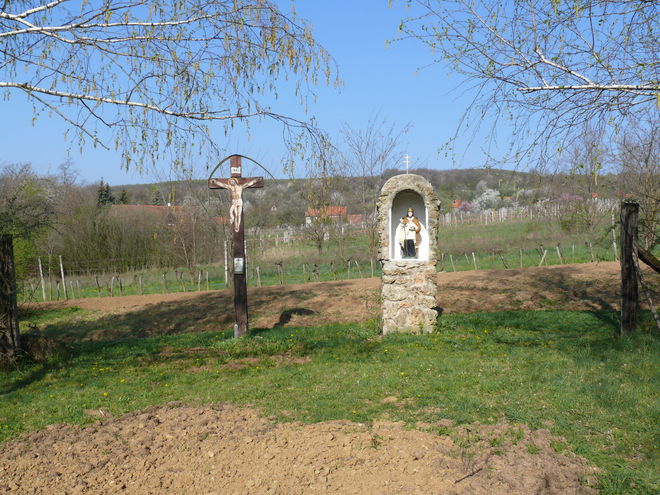
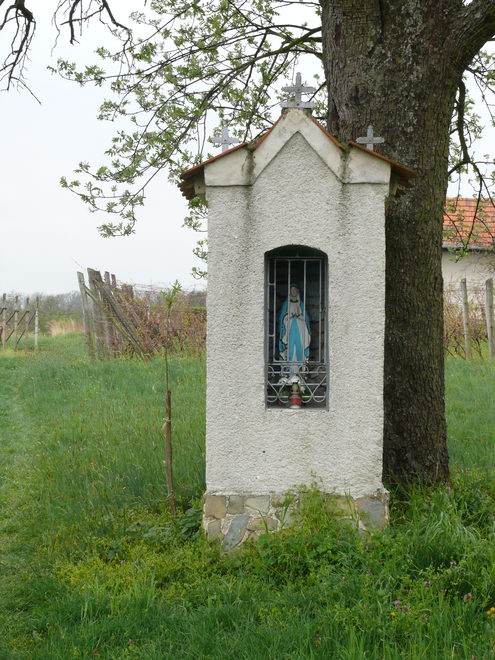
Interesting facts
Yearlong the vineyard was taken care of by a vineyard keeper called pereg, who was seasonally helped by an assistant keeper called szőllőpásztor. Apart from yearlong guarding the vineyards and wine cellars the keeper had to fulfil a peculiar duty: on Christmas Eve he had to visit all winemaker houses in the municipality and mark them with a sing, a letter or the abbreviation GMB, so that the winegrowers knew that someone was keeping their vineyards during Christmas. At the end of May or beginning of June processions and prayers are held for the harvest and the protection against crop failure. The inhabitants of Ladice follow an old habit of their ancestors. One year the prayers take place in the Tekov part and the following year in the Nitra vineyards.